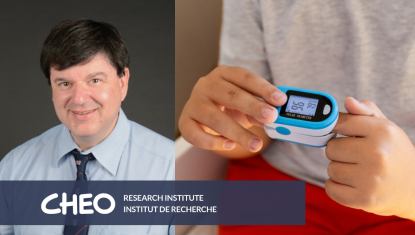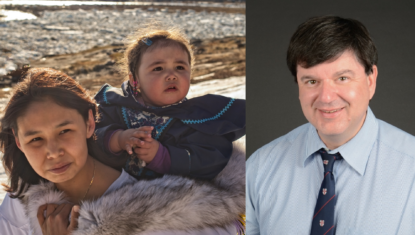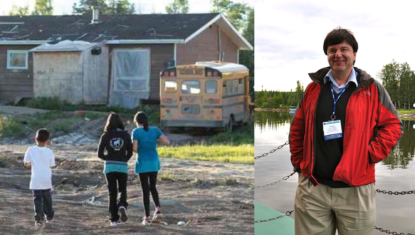Dr. Kovesi is a pediatric respirologist at CHEO, and Professor of Pediatrics at the University of Ottawa. He completed his residency training at CHEO and at the Izaak Walton Killam children’s hospital in Halifax. He completed his fellowship at Sick Kids, in Toronto. Dr. Kovesi has been on staff at CHEO since 1992. Dr. Kovesi’s work has included the development of Canadian national asthma guidelines, description of the respiratory complications of congenital tracheoesophageal fistula, and research on the effects of problems with indoor air quality on the respiratory health of indigenous children, including Inuit children and First Nations children living on reserves in Canada.
The latter is his primary research focus, and his research group has published the most comprehensive descriptions of indoor air quality in houses in Nunavut and First Nations reserves in northern Ontario available, as well as one of the largest RCT’s on modifying indoor air quality in the world. Dr. Kovesi has served as Chair of the Ontario Thoracic Society, Chair of the Pediatric Assembly of the Canadian Thoracic Society, Chief Examiner for Pediatric Respirology, Royal College of Physicians and Surgeons of Canada, and Anglophone Content Expert (Respirology), Unit 1, Faculty of Medicine, University of Ottawa. He is a member of the Executive, International Network on Esophageal Atresia.
Related News
-

16/01/2024
Commercial pediatric fingertip devices and smartphone applications used to measure oxygen saturation not recommended for infants
-

01/05/2023
Researchers discover new gene variant causing inherited lung disease in Inuit
-

24/08/2022
Study links poor housing conditions with respiratory health issues in First Nations children
Research Projects
-
The International Network on Oesophageal Atresia (INoEA) consensus guidelines on the transition of patients with oesophageal atresia-tracheoesophageal fistula
07/06/2023
Dramatic improvement in neonatal care and paediatric surgery has been observed over the past 20 years, enabling most patients with EA-TEF to survive through adulthood. EA-TEF is no more a paediatric disease but an adult disease with chronic problems. Severe complications that were not observed in the past because only a few patients reached adulthood are now a concern. The transition from adolescence to adult medicine is, therefore, a new challenge. Transition is a critical period where the risk of poor compliance and loss of follow-up is high. This risk should be anticipated, and a good transition requires training and preparation of the adolescent and family and a multidisciplinary team.
-
First reports of primary ciliary dyskinesia caused by a shared DNAH11 allele in Canadian Inuit
23/04/2023
The discovery of this homozygous DNAH11 variant in widely disparate parts of the Nunangat (Inuit homelands) suggests this is a founder mutation that may be widespread in Inuit. Thus, PCD may be an important cause of chronic lung, sinus, and middle ear disease in this population. Inuit with chronic lung disease, including bronchiectasis or laterality defects, should undergo genetic testing for PCD. Consideration of including PCD genetic analysis in routine newborn screening should be considered in Inuit regions.
-
Housing conditions and respiratory morbidity in Indigenous children in remote communities in Northwestern Ontario, Canada
24/01/2022
Many houses in these FN communities had substantial IEQ problems. Presence of endotoxin was associated with wheezing with colds and tended to be associated with LRTI in young children. Surface area of visible mould tended to be associated with URTI visits. Urgent collective action is needed to respond to historically damaging impacts of colonization, including systemic indifference.
-
Aerosol SARS-CoV-2 in hospitals and long-term care homes during the COVID-19 pandemic
04/06/2021
Although a subset of aerosol samples exhibited detectable SARS-CoV-2 RNA at low titres, the presence of viable SARS-CoV-2 virus in aerosols appears to be infrequent at >2m distance.
-
Care recommendations for the respiratory complications of esophageal atresia-tracheoesophageal fistula
27/07/2020
Tracheoesophageal fistula (TEF) with esophageal atresia (EA) is a common congenital anomaly that is associated with significant respiratory morbidity throughout life. The objective of this document is to provide a framework for the diagnosis and management of the respiratory complications that are associated with the condition.

